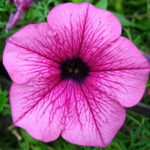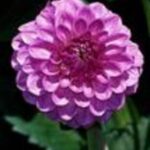Some popular annual flowers, like impatiens or petunia, are easy to grow and pretty to look at, yet they are not a good choice for cutting to make flower arrangements. Try some or all of these annual flowers for your flower garden. All these annual flowers will grow in a full sun garden and can be planted from seed directly outdoors in the spring after danger of frost.
Snapdragon
The Rocket cultivar of snapdragon (Antirrhinum majus) drops seeds in the fall that may re-grow the following spring. Rocket snapdragon can reach a height of 4 feet. With blooms of red, yellow, lavender, white or orange displaying from summer into early fall, these sun-loving snapdragons are a good choice for annual flowers for cutting.
Larkspur
Larkspur (Consolida ambigua) self-seeds so you may see returning plants in the spring. Larkspur grows 24 to 36 inches tall and may need staking in weedy areas. Look for Giant Imperial, Snow Cloud, or Blue Cloud cultivars of larkspur. Blooms appear in summer and can continue into fall with deadheading. Bloom colors depend on cultivar and may be red, white, pink, blue or lavender.
Zinnia
Zinnia (Zinnia elegans) offers several cultivars suitable for cutting flowers, especially the Blue Point cultivar. Reaching up to 3 feet tall, Blue Point is a favorite of florists. The large blooms may be yellow, red, white, orange or pink.
Statice
The Pacific cultivar of Statice (Limonium sinuatum) produces clusters of blooms of white, pink, yellow or mauve on strong stems that can reach 30 inches tall. The blooms offer continuing beauty when dried to use on wreaths or other craft projects. Simply shorten the stalk, stand the flowers in a vase with no water, and allow them to dry naturally.
Salvia
Blue Bedder, a salvia (Salvia farinacea), grows 2 to 3 feet tall. The fragrant blue flowers are surrounded by grayish leaves, adding to the interest of this plant for annual flower cuttings. Blue Bedder is a perennial south of USDA zone 7.
Feathered amaranth
Also known as crested cockscomb (Celosia cristata), the Chief series is a good choice for an annual flower garden. Look for seeds like Big Chief, with its large, half-sphere blooms of gold or red.
Planting
Follow the directions on the seed packet, which may indicate working the soil down to at least 6 inches to loosen the soil for good root penetration and drainage. Organic matter, like leaf mold (dried leaves), may be worked into the turned soil if desired. Organic matter provides nutrients to the plants as it helps to retain moisture. Many seeds are planted shallow, like 1/4 inch. To make planting easier, scoop up some of the prepared soil, re-level the planting bed, moisten the soil, sow the seeds, and then cover the seeds with a thin layer of the reserved soil.
Further directions will indicate to thin the seedlings when they reach a certain height, like 2 or 3 inches. Thinning can mean to pull out the weak-looking seedlings as well as pulling out healthy looking seedlings to increase space between plants. Some success may result in replanting the pulled seedlings in another area of your annual flower garden. Our friends at Colorado State University Extension add, “When seedlings appear, thin plants to half the height they are supposed to attain, except for tall, spike-like annuals such as snapdragons, larkspur and foxglove. Thin these to one-fourth their mature height for a fuller, more showy effect.”
More from this contributor:
Transplanting a Root Bound Potted Tree or Shrub
Fight Plant Disease, Fungus, Black Spot with Homemade Products
Dealing with Container Vegetable Garden Problems
Sources: Washington State University Extension: Timeline for producing Northwest cut flowers; Colorado State University Extension: Growing Plants from Seed




